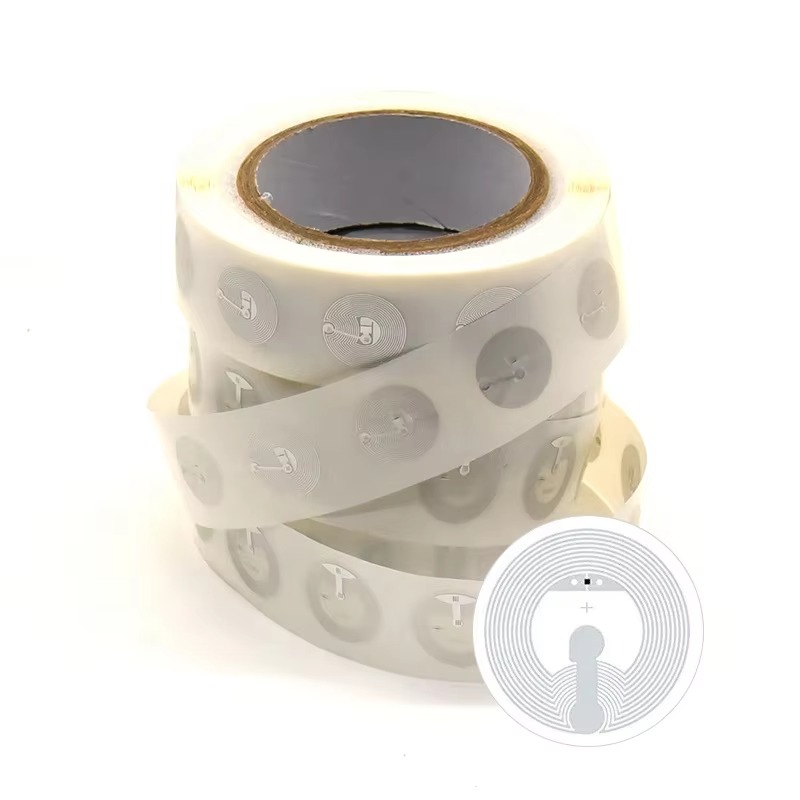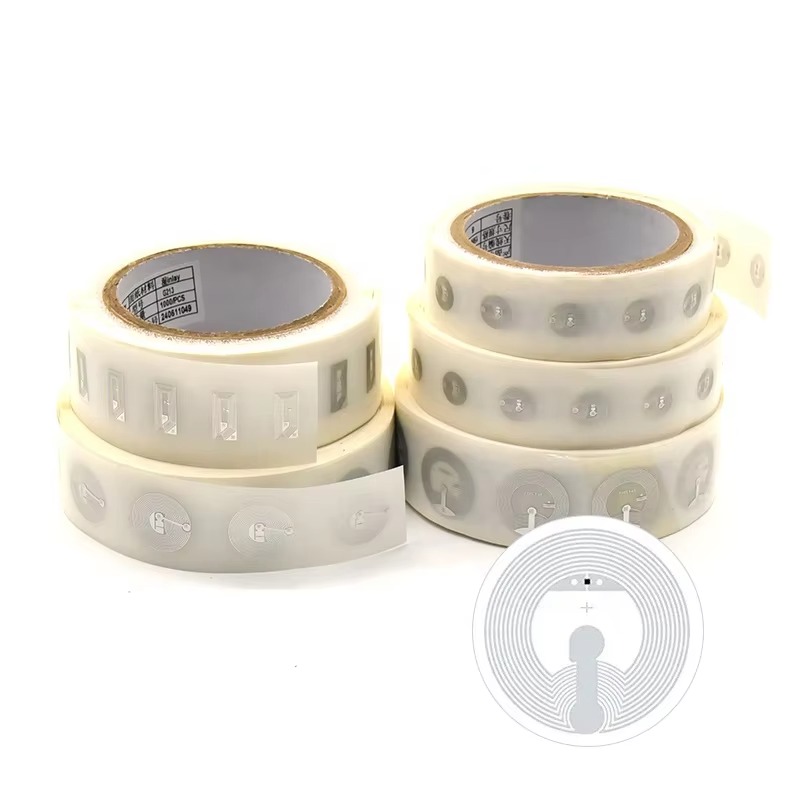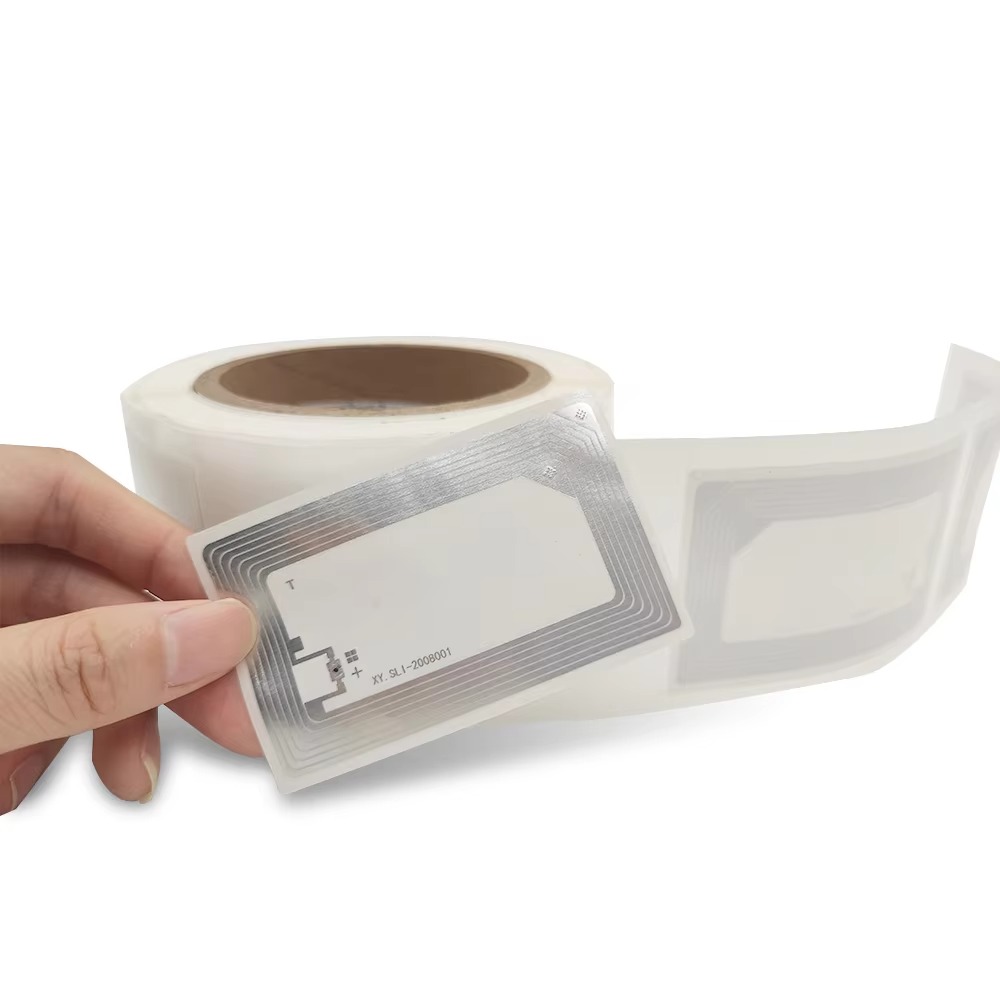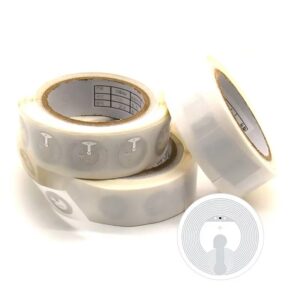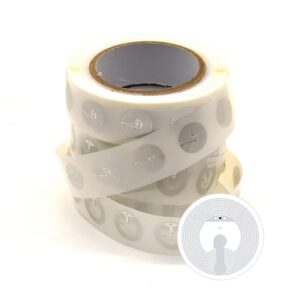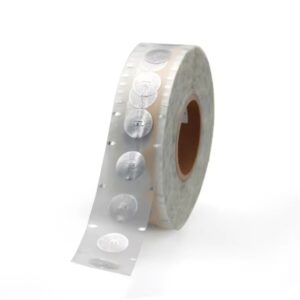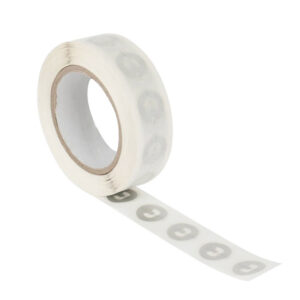RFID Inlays
RFID Inlays is composed of aluminum foil etched antenna, PET substrate, and chip. It is usually composed of two or three layers. Commonly used chips, we have millions of RFID INLAY in stock
RFID Inlays
RFID INLAYS is composed of aluminum foil etched antenna, PET substrate, and chip. It is usually composed of two or three layers. It can also be understood as a semi-finished product of RFID tags that is not encapsulated. Inlay can be used to make different types of RFID tags after different forms of encapsulation.
RFID Inlay is divided into two types: RFID Dry Inlay and RFID Wet Inlay. The main difference between dry inlay and wet inlay is that their substrates, composition, use and production process are different.
Different composition structure
RFID Dry inlay is mainly composed of IC wafer and etched aluminum foil antenna, without adhesive backing, and the structure is antenna + chip + chip package; wet inlay contains adhesive backing and can be directly attached to items as finished labels. The structure is antenna + chip + chip package + surface paper + bottom paper.
|
Material
|
Paper, Self-adhesive Paper, Ricoh® thermal paper, PP/Tyvek®, PVC, Soft Plastic, PET,TT Printable White Film
|
|
Frequency
|
13.56MHz or 860·960MHZ
|
|
Protocol
|
ISO14443A or EPC GEN2
|
|
Write Cycles
|
100000
|
|
Product description
|
Passive NFC Copper Antenna Wet Inlay tag for smart inlays,labels and tags
|
|
tag chip
|
NXP NTAG® 213/NTAG® 215/NTAG® 216/NXP U CODE 9 /ALIEN H9 ,H10,etc
|
|
User memory [Bytes]
|
144/504/888 etc
|
|
Szie
|
25*12mm,16*58MM ,48*76MM or customized
|
|
Packaging
|
1000-5000pcs/roll, 4 rolls /carton
|
|
Temperature range [°C]
|
-25 to +70
|
|
Security features
|
|
|
UID ASCII mirror & NFC counter ASCII mirror
|
Yes
|
|
Authentication via ECC
|
Yes
|
|
Access keys
|
32 bit
|
|
Read/Write protection
|
NFC/RFID
|
|
Password authentication counter
|
Yes
|
Different substrates
RFID Dry inlays are usually made of PET substrates, while RFID wet inlays are usually made of release paper substrates. RFID Wet inlays are made by applying a layer of sticky glue on the surface of the dry inlay and attaching it to the release paper, and the other side is covered with a film for protection.
Different production processes
The production process of RFID dry inlays includes flipping the IC on the antenna pad position, then applying glue on the antenna pad position through a flip-capsulation machine, and then aligning the IC with the pad, and fixing the IC on the pad through high temperature and high pressure. Wet inlay itself is a “label” with glue attached to the release paper. During the composite process, there is no need to use a film or apply hot melt glue to attach the inlay. Compared with dry inlay composite processing, it is relatively easy. During the processing, the wet inlay is first separated from the release paper and “labeled” and attached to the label’s base substrate. Secondly, a printable or printed surface label is covered on it as needed, and then die-cut to become an RFID label. In contrast, wet inlay refers to inlay with adhesive on the back. It has all the functions of a label and can be directly pasted on the surface of the product or attached to the inside of the item.
Different uses
Due to different production processes, the uses of RFID inlay are also different. RFID Dry inlay usually requires further processing to become a RFID label that can be used directly, such as self-adhesive labels or white cards. RFID Dry inlay is more suitable for applications that require deep customization or processing; while RFID wet inlay can be used directly and is more suitable for application scenarios that require rapid deployment and direct use.




